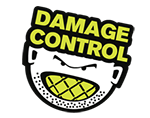Your Cart is Empty
Menu


Important Facts for Athletes to Know About Mouthguards
August 13, 2019 2 min read 14 Comments
For any athlete, and particularly younger individuals with still-developing mouths and brains, wearing a mouthguard is vital. The vast majority of injuries to high school athletes, for instance, take place when no mouthguard is being worn – you don’t want your child to be among this group.
At Damage Control Mouthguards, we offer a wide range of mouthguards, from custom mouthguard options to others specifically designed for sports like MMA, football, kickboxing, hockey, basketball or several others. Any athlete should be aware of some basic facts about mouthguards before beginning competition; here are a few top areas to ensure your child is up to speed on before hitting the field.

Essential Even for Non-Contact Sports
While mouthguards have a reputation for their use within contact sports, one that’s well-deserved, it’s vital to note that mouthguards are highly beneficial even for sports or games with less contact. Think of an alternative sport like skateboarding, for instance, which isn’t technically a “contact” sport – but is still one where individuals regularly injure their head or mouth area due to unexpected falls.
For these and several other kinds of athletes, mouthguards are important even if person-to-person contact isn’t likely. The mouthguard will protect from risks based on falls, slips or other accidental impacts. It’s good to get your child into the habit of wearing a mouthguard for all intense physical activity at a young age.
Vital for Those With Braces
If your child or teen wears braces, the use of a mouthguard during any significant athletic activity becomes even more important. Mouthguards will protect brackets, but also will keep the lips and cheeks safe if a collision or facial trauma does take place. If you’re uncertain here, speak to your child’s dentist about the best mouthguard option (it’s almost always a custom-fitted mouthguard like those we offer at Damage Control Mouthguards).
No Mouthguard? Front Teeth Are at Greatest Risk
If you’re looking for a motivator to increase your child’s mouthguard awareness, look no further than the front teeth. Explain to them that rates of front teeth injuries, including simply loosing the tooth altogether and looking silly, are greatly raised when no mouthguard is worn during athletic activity. The front upper teeth stick out more than others, making them especially susceptible. A mouthguard, however, limits such risks for all teeth, including those at the highest risk.
Mouthguard Care
Once a mouthguard has been purchased, it requires just a few elements of basic care to work optimally:;
- Rinse or brush the mouthguard with a toothbrush between games.
- Separately, clean the mouthguard using cool, soap-filled water at least once a month, rinsing well afterward.
- Use a strong, well-ventilated container for storage.
- Store your mouthguard away from the sun or any hot water, which could alter its shape.
- Bring your mouthguard to regular appointments with your dentist for evaluation.
- If the mouthguard develops holes or other damage that stop it from operating properly, consider replacing it.


